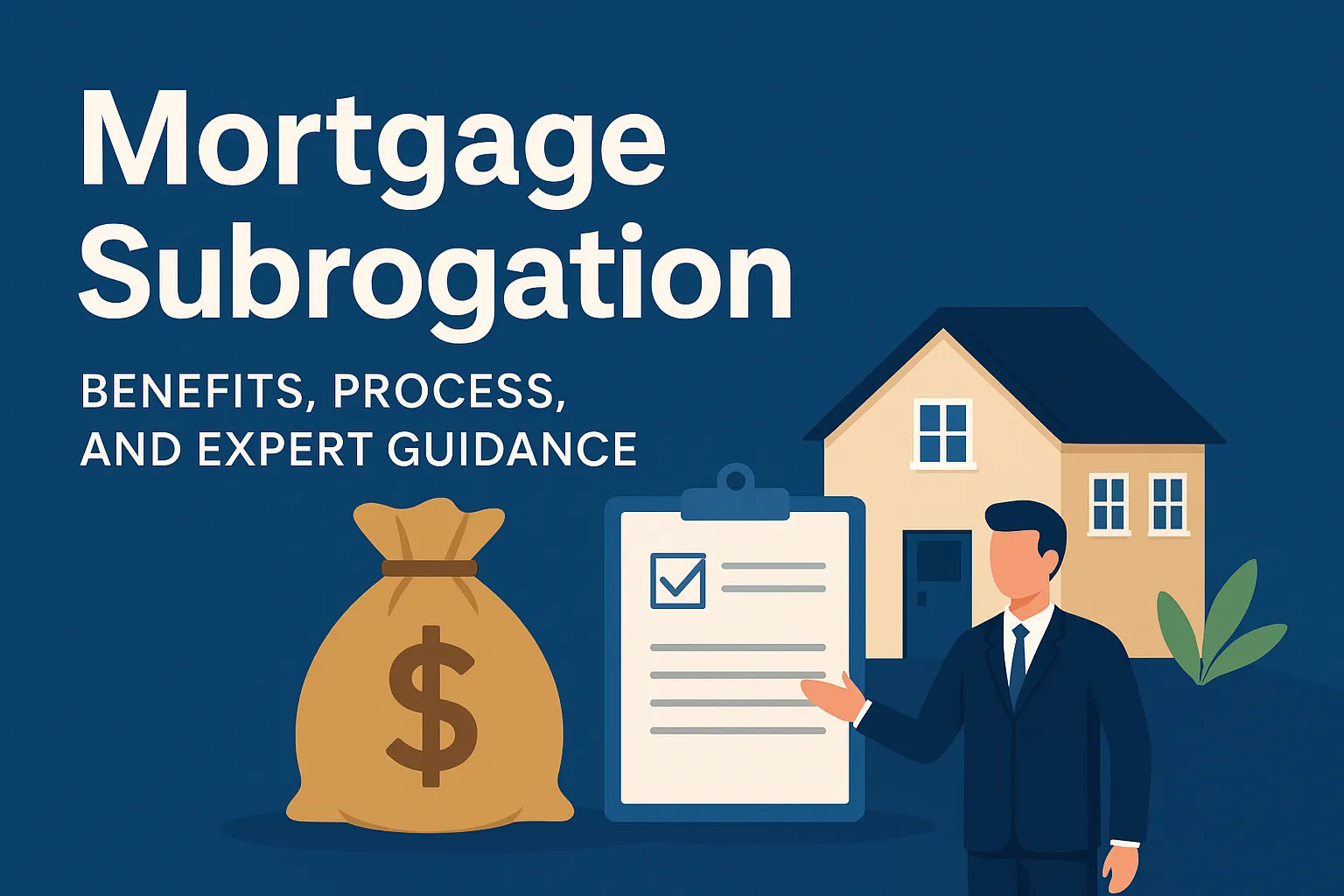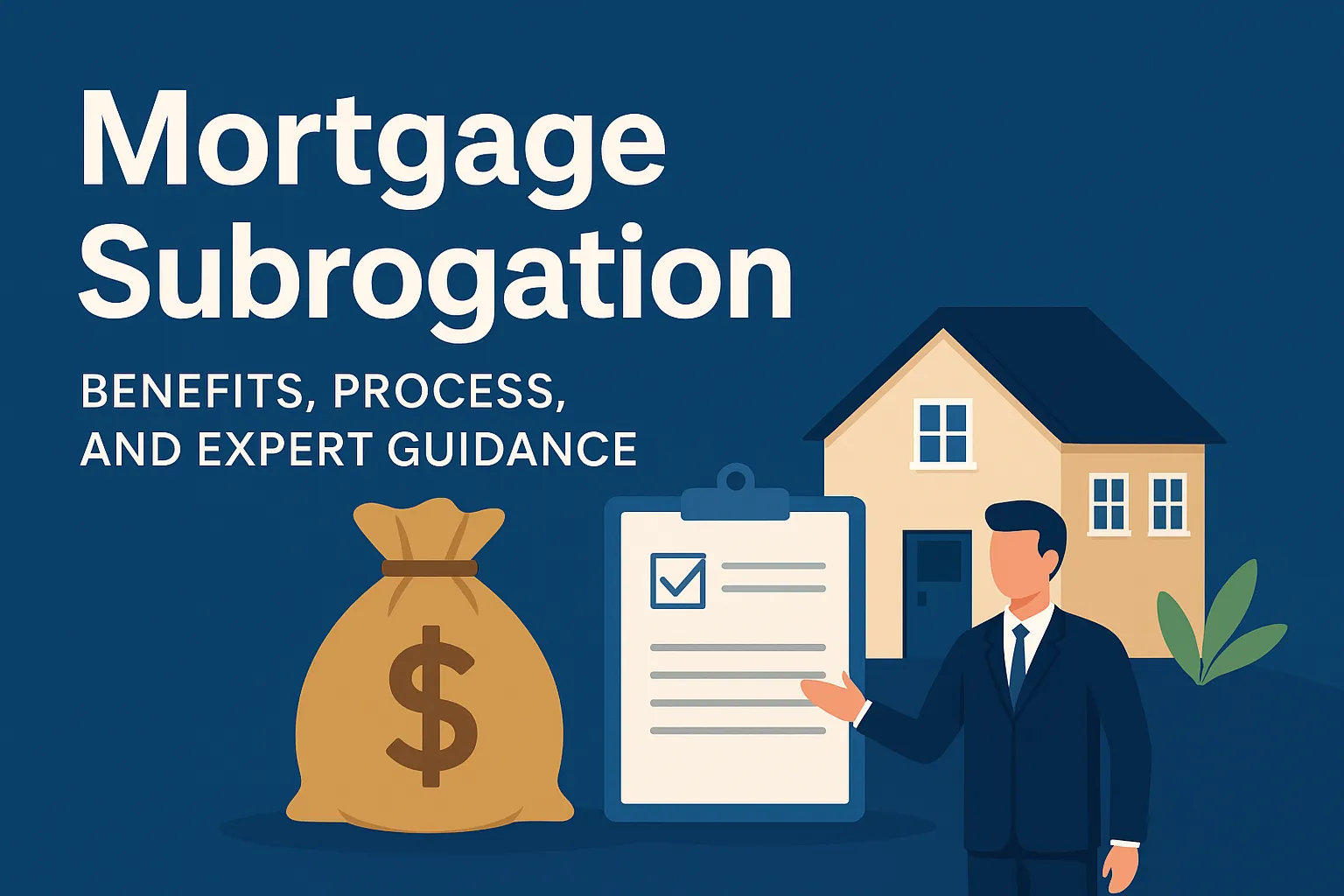Mortgage Subrogation: Benefits, Process, and Expert Guidance
Introduction to Mortgage Subrogation
Mortgage subrogation is a process that allows borrowers to transfer their existing mortgage from one lender to another, typically in pursuit of more favorable loan conditions, such as a lower interest rate or improved contract terms. Unlike refinancing, which often involves creating a new loan, subrogation lets you keep the original loan balance and amortization period, making it a streamlined alternative for many homeowners [1] [3]. This article explores the mechanics, benefits, and practical advice for those considering mortgage subrogation. How Does Mortgage Subrogation Work?
How Does Mortgage Subrogation Work?
At its core, mortgage subrogation involves the replacement of one party in the mortgage agreement—usually the lender—with another. There are two main types:
- Borrower Subrogation: Occurs when a buyer takes over the seller’s existing mortgage, typically during a property sale.
- Lender Subrogation: Happens when a borrower transfers their mortgage to a new bank or financial institution to secure better conditions [5].
The process generally unfolds as follows:
- Identify a new lender willing to assume the existing mortgage.
- The new lender evaluates your financial situation and the terms of your current mortgage.
- If approved, a formal request is submitted, including all relevant loan details.
- The new lender replaces the old one in the mortgage deed, with no change to the loan balance or amortization period [1].
It is important to note that permission from the original lender is usually required, and certain legal and financial prerequisites must be met [3].
Key Advantages of Mortgage Subrogation
Mortgage subrogation offers several notable benefits for homeowners and property buyers:
- Access to Better Interest Rates: The most common motivation is to secure a lower interest rate, potentially saving thousands over the life of the loan [5].
- Reduced Ancillary Costs: Many banks require customers to purchase additional products (such as insurance or pension plans) as part of the mortgage. Subrogation can help you eliminate or renegotiate these requirements, reducing overall costs.
- Escape Unfavorable Terms: If your current mortgage includes punitive clauses—like high late payment penalties—subrogation provides an opportunity to switch to fairer conditions.
- Simplified Process Compared to Refinancing: Since the principal and amortization period remain unchanged, the process is often less complex and quicker than a full refinance [1].
- Flexibility for Life Changes: If your financial situation or goals change, subrogation allows you to adapt your mortgage accordingly—without starting from scratch.
Potential Challenges and Considerations
While mortgage subrogation can be advantageous, there are important factors to consider:
- Approval from Original Lender: The process requires consent from your current lender, who may impose conditions or fees for the transfer [3].
- Legal and Administrative Costs: Although typically lower than those of full refinancing, you may still incur notary, registration, or administrative fees. It’s essential to compare these costs with the potential savings.
- Qualification Requirements: The new lender will evaluate your creditworthiness and may reject the application if you do not meet their standards.
- Impact on Repayment Terms: While the loan amount and period remain the same, other terms—such as the interest rate or required products—may change. Carefully review all new conditions before proceeding.
- Opting Out: If you choose not to proceed with subrogation, you must inform your original lender and may need to provide documentation or meet specific requirements [3].
Step-by-Step Guide to Mortgage Subrogation
For those considering mortgage subrogation, the following steps can help ensure a smooth process:
- Assess Your Current Mortgage: Gather all details about your existing mortgage, including interest rate, remaining balance, amortization period, and any associated products or penalties.
- Research Alternative Lenders: Compare offers from various banks or financial institutions. Focus on interest rates, required products, and overall terms.
- Consult a Mortgage Broker: An experienced broker can help you navigate the process, identify the best deals, and handle negotiations [1].
- Apply for Subrogation: Submit a formal request to the new lender, including all required documentation.
- Obtain Consent from Original Lender: Work with your current lender to fulfill any requirements for the transfer. This may involve paying a fee or providing additional paperwork.
- Finalize the Transfer: Once approved, the new lender will take over your mortgage, and the change will be recorded in the mortgage deed.
Examples and Case Studies
Example 1: Maria has a mortgage at a 5% interest rate. After several years, market rates drop to 3.5%. By subrogating her mortgage to a new lender offering the lower rate, she saves significantly on interest payments over the remaining term.
Example 2: John’s mortgage requires him to maintain an expensive home insurance policy through his bank. By switching lenders via subrogation, he is able to choose a more affordable insurance provider, reducing his monthly expenses.
Alternative Approaches
If mortgage subrogation is not viable—perhaps due to lender refusal or high associated costs—other options include:
- Refinancing: Taking out a completely new mortgage to replace the existing one. This may allow for greater flexibility but can involve higher costs and more complex approval processes.
- Loan Modification: Negotiating with your current lender to change the terms of your existing loan, such as lowering the interest rate or extending the repayment period. This is often used as a loss mitigation strategy [4].
- Partial Repayment: Making additional payments to reduce the principal balance, which can lower interest costs even without changing lenders.
Expert Advice for a Successful Subrogation
To maximize the benefits of mortgage subrogation, consider the following professional tips:
- Start Early: Begin exploring options well before your current mortgage becomes unfavorable. This gives you time to compare offers and negotiate effectively.
- Read the Fine Print: Carefully review all terms and conditions from both your original and prospective new lenders. Pay attention to hidden fees, required products, and penalty clauses.
- Calculate Total Savings: Use a mortgage subrogation calculator, if available, to estimate potential savings after accounting for all associated costs [5].
- Seek Professional Guidance: Mortgage brokers, financial advisors, and legal experts can provide valuable insights and help you avoid common pitfalls.
- Communicate Clearly: Maintain open communication with both lenders throughout the process to avoid misunderstandings or delays.
Potential Pitfalls to Avoid
Some common mistakes to watch out for include:
- Overlooking administrative fees that may offset potential savings.
- Assuming all lenders offer the same flexibility or terms—always compare multiple offers.
- Failing to consider the impact of required ancillary products on overall costs.
- Not verifying the new lender’s reputation and reliability.
Conclusion: Is Mortgage Subrogation Right for You?
Mortgage subrogation is a powerful tool for homeowners seeking better loan terms without the hassle of a full refinance. By understanding the process, weighing the advantages, and seeking expert advice, you can make an informed decision that aligns with your financial goals. Always consider the total cost-benefit equation and consult with professionals to ensure a successful transition.











